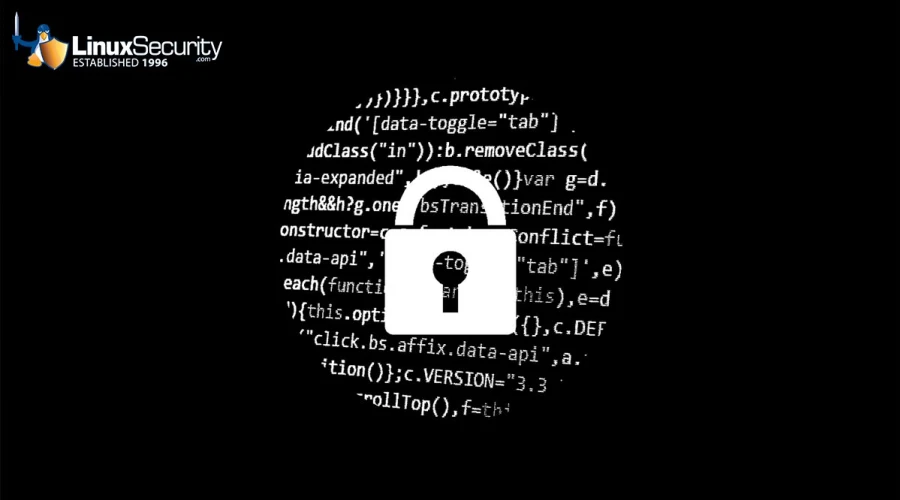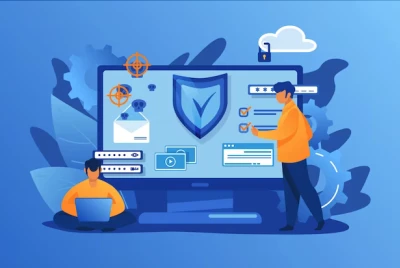
For Linux administrators, maintaining system security involves several critical and complex tasks. Implementing kernel lockdown helps protect the system from unauthorized changes, but configuring it can be challenging. Regular auditing is essential to monitor and identify potential security issues, yet it demands thoroughness and precision.
Effective employee education is also vital since well-informed staff can significantly reduce the risk of human error leading to vulnerabilities.
This article examines these issues within the context of the historical evolution of Linux vulnerabilities, focusing particularly on the ksmbd file server module vulnerability. By understanding these defensive strategies and their practical applications, Linux administrators can better protect their networks against longstanding and new threats.
Understanding Linux Vulnerabilities
A vulnerability in an operating system is a weakness that an attacker manipulates and eventually allows unauthorized access to critical data or other destructive actions. In Linux, vulnerabilities could be present due to flawed kernel development, configuration errors, or third-party apps with security gaps. These vulnerabilities are of the utmost importance and must be dealt with since they may lead to serious consequences, including information disclosure and disruption of normal system operation.
Linux Vulnerabilities Over Time and Their Impact
 Historically, Linux has not been immune to vulnerabilities. The first known virus for Linux, Staog, was discovered in 1996. Staog had no serious payload to cause extreme damage. It was more of a forerunner of worse malware that would come later on. As kernel development in Linux grew, so did the increasing complexity of cyber threats, resulting in significant vulnerabilities that critically impact enterprise operations.
Historically, Linux has not been immune to vulnerabilities. The first known virus for Linux, Staog, was discovered in 1996. Staog had no serious payload to cause extreme damage. It was more of a forerunner of worse malware that would come later on. As kernel development in Linux grew, so did the increasing complexity of cyber threats, resulting in significant vulnerabilities that critically impact enterprise operations.
Notable Linux vulnerabilities include:
CVE-2022-47939
Identified in late 2022 by the Zero Day Initiative, CVE-2022-47939 is a critical vulnerability associated with the ksmbd file server module of the Linux kernel. With a CVSSv3 score of 10.0, this vulnerability is particularly concerning due to its exploitation potential. It arises from improper dynamic memory allocation, leading to a use-after-free condition that allows unauthenticated, remote attackers to execute arbitrary code on affected systems. Although ksmbd is disabled by default in most Linux distributions, certain versions of Debian and Ubuntu were affected before subsequent patches were released.
CVE-2022-25636
Another significant vulnerability surfaced in February 2022, CVE-2022-25636. This vulnerability affects the Linux kernel through a heap out-of-bounds write error within the nft_fwd_dup_netdev_offload function in the netfilter component. It could lead to system crashes or privilege escalation on Red Hat Linux versions 8.3 and above, further illustrating the need for vigilant security practices.
CVE-2022-0847 (Dirty Pipe)
The Dirty Pipe vulnerability, discovered in 2022, targets local privilege escalation in Linux kernel versions 5.8 and higher. This flaw enables threat actors to overwrite files with read-only permissions, allowing malicious applications to control the system completely. With a CVSSv3 score of 7.8, this vulnerability was primarily observed in Android devices, highlighting the cross-platform implications of Linux vulnerabilities.
CVE-2021-4034 (Polkit)
Another critical vulnerability, CVE-2021-4034, affects the Polkit authentication framework, enabling privilege escalation for threat actors. This vulnerability, present in the pkexec application, was found to have existed for over 12 years, impacting popular Linux distributions like Debian, Fedora, and Ubuntu. The ability to obtain full root privileges underscores the critical nature of this flaw.
CVE-2024-26592 and CVE-2024-26594
Recently identified vulnerabilities, CVE-2024-26592 and CVE-2024-26594, target the ksmbd file server, allowing unauthenticated attackers to access sensitive data. When combined, these vulnerabilities could permit the execution of arbitrary code in the kernel, jeopardizing the availability, confidentiality, and integrity of targeted systems. The potential for such exploits emphasizes the need for robust network security measures.
The Growing Threat Landscape
The emergence of these vulnerabilities illustrates a troubling trend: as Linux grows in popularity, it becomes a more attractive target for cybercriminals. According to the Cybersecurity and Infrastructure Security Agency (CISA), vulnerabilities in open-source software accounted for a significant percentage of breaches in recent years, with Linux being a notable component. Statistics from IBM indicate that the average cost of a data breach is $4.35 million, with compromised data being a leading factor in the financial fallout of such incidents. These highlight the critical need for organizations to prioritize security measures in their Linux environments.
Safeguarding Linux-Based Networks
Given the evolving landscape of Linux vulnerabilities, organizations must adopt comprehensive security strategies to protect their Linux-based networks. The following best practices can serve as a foundation for securing these environments:
Leverage Linux Kernel Lockdown
Implementing the Linux Kernel Lockdown feature can significantly enhance security. By restricting access to the Linux kernel's features and data structures, organizations can prevent unauthorized access to kernel memory and block the loading of unsigned kernel modules. Additionally, enabling secure boot restrictions ensures that malicious alterations to the boot process are mitigated, providing an extra layer of protection against exploitation.
Regularly Audit Open Ports
Open ports are common entry points for attackers. Routine port audits can help identify unnecessary open ports that could expose the system to threats. System administrators must regularly verify firewall configurations and close any ports that are not explicitly required for service operations. Tools like Nmap can be utilized to perform comprehensive port scanning and assessment.
Conduct Regular Security Audits
Implementing regular security audits is a proactive approach to identifying vulnerabilities within the Linux environment. Utilizing the Linux Auditing System enables administrators to collect and analyze logs on system activities. These logs provide valuable insights into security posture, allowing for prompt remediation of potential threats.
Ensure Timely Patching of Operating Systems and Software
Maintaining up-to-date systems is crucial in defending against cyber threats. Organizations must implement a robust patch management process for the operating system and third-party applications. The rapid emergence of vulnerabilities necessitates an automated approach to patch management, ensuring timely detection and deployment of patches.
Employ Intrusion Detection Systems (IDS)
Utilizing Intrusion Detection Systems (IDS) can provide real-time network traffic and system behavior monitoring. An IDS can help detect and respond to suspicious activities, enabling organizations to mitigate potential threats before they escalate. Implementing tools such as Snort or Suricata can enhance the overall security posture of Linux networks.
Implement Least Privilege Access Controls
Adopting the principle of least privilege ensures that users and applications are granted the minimum level of access necessary to perform their functions. Organizations can reduce the risk of unauthorized access and potential exploits from compromised accounts by limiting privileges. This approach also extends to software and services management, ensuring that only essential components are active and accessible.
Educate and Train Personnel
Human error remains a leading cause of security incidents. Regular training sessions for system administrators and users can raise awareness of potential threats and reinforce security best practices. Phishing simulations, security workshops, and ongoing education programs can empower employees to effectively recognize and respond to security threats.
Monitor System Logs and Alerts
Continuous monitoring of system logs is essential for identifying suspicious activities. Centralized logging solutions can facilitate the aggregation of logs from various sources, allowing for real-time analysis and alerting. Tools like ELK Stack (Elasticsearch, Logstash, Kibana) can aid in visualizing log data and detecting anomalies.
Our Final Thoughts on Protecting Against Linux Vulnerabilities
 The evolution of Linux vulnerabilities necessitates robust security practices. The landscape of cyber threats keeps changing. Therefore, organizations should take proactive approaches to protecting Linux-based networks.
The evolution of Linux vulnerabilities necessitates robust security practices. The landscape of cyber threats keeps changing. Therefore, organizations should take proactive approaches to protecting Linux-based networks.
Key strategies include leveraging Linux Kernel Lockdown, conducting regular audits, ensuring timely patch management, and educating personnel on security best practices. By implementing a comprehensive security framework, organizations could significantly reduce exposure to vulnerabilities and protect their critical assets.
Finally, to keep a Linux environment secure, there should be an understanding of Linux vulnerabilities in a historical context.
The ever-growing landscape of threats requires a constant commitment toward safeguarding your system from cyber threats.



















